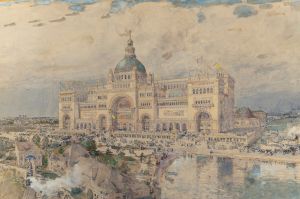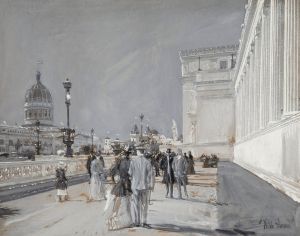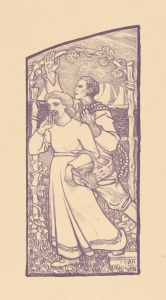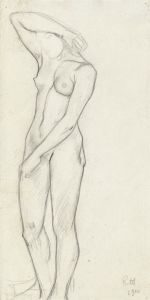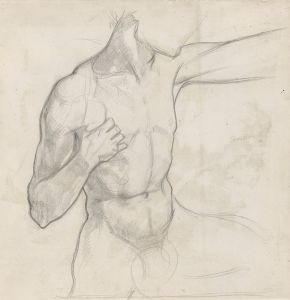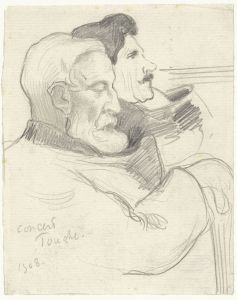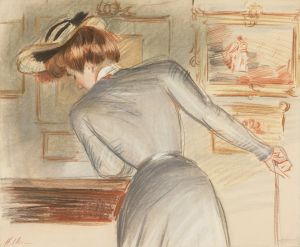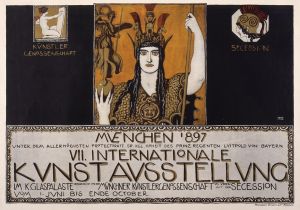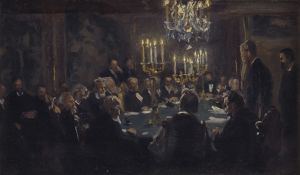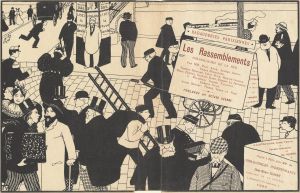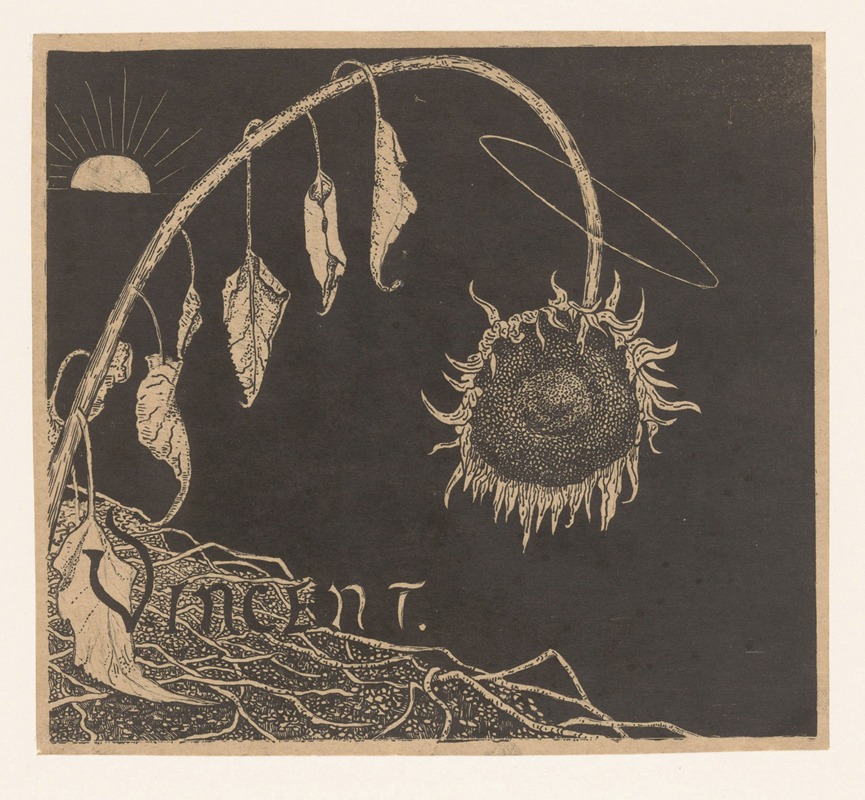
Omslagontwerp voor; Richard Roland Holst, Tentoonstelling der nagelaten werken van Vincent Van Gogh, 1892
A hand-painted replica of Richard Nicolaüs Roland Holst’s masterpiece Omslagontwerp voor; Richard Roland Holst, Tentoonstelling der nagelaten werken van Vincent Van Gogh, 1892, meticulously crafted by professional artists to capture the true essence of the original. Each piece is created with museum-quality canvas and rare mineral pigments, carefully painted by experienced artists with delicate brushstrokes and rich, layered colors to perfectly recreate the texture of the original artwork. Unlike machine-printed reproductions, this hand-painted version brings the painting to life, infused with the artist’s emotions and skill in every stroke. Whether for personal collection or home decoration, it instantly elevates the artistic atmosphere of any space.
Richard Nicolaüs Roland Holst was a prominent Dutch artist and designer, known for his contributions to the Arts and Crafts movement in the Netherlands. One of his notable works is the cover design for the exhibition catalog "Tentoonstelling der nagelaten werken van Vincent Van Gogh," which translates to "Exhibition of the Works Left Behind by Vincent Van Gogh." This exhibition took place in 1892, two years after Van Gogh's death, and was significant in promoting the artist's work posthumously.
Roland Holst's design for the catalog cover is an example of his skill in graphic design and his ability to capture the essence of the subject matter. The cover would have been intended to reflect the spirit of Van Gogh's work, which was characterized by bold colors and emotional intensity. While specific details about the design itself are not extensively documented, Roland Holst's style typically included elements of symbolism and a strong sense of composition, which would have been fitting for a catalog dedicated to Van Gogh.
The 1892 exhibition was organized by the art dealer and Van Gogh's brother, Theo Van Gogh, who played a crucial role in Vincent's life and career. After Theo's death, his widow, Johanna van Gogh-Bonger, continued to promote Vincent's work, leading to this exhibition. The event was pivotal in establishing Vincent Van Gogh's reputation as a significant artist, as it introduced his work to a broader audience and helped secure his legacy in the art world.
Richard Roland Holst was part of a broader movement in the Netherlands that sought to integrate art into everyday life, a principle that was central to the Arts and Crafts movement. This movement emphasized craftsmanship and the decorative arts, reacting against the industrialization of the late 19th century. Roland Holst's work often included collaborations with other artists and designers, and he was known for his versatility across different mediums, including painting, illustration, and design.
In addition to his work as a designer, Roland Holst was also an influential teacher and writer. He served as a professor at the Rijksakademie van Beeldende Kunsten in Amsterdam, where he influenced a generation of artists. His writings on art and design further contributed to the discourse on the role of art in society.
The cover design for the Van Gogh exhibition catalog is a testament to Roland Holst's ability to convey complex ideas through visual means. While the specific imagery of the cover is not widely documented, it is likely that it reflected both the innovative spirit of Van Gogh's work and the broader artistic trends of the time. Roland Holst's contribution to this exhibition underscores the interconnectedness of artists and designers in promoting and preserving the legacy of influential figures like Vincent Van Gogh.
Overall, Richard Nicolaüs Roland Holst's work on the exhibition catalog cover is a small but significant part of his broader artistic legacy, which continues to be recognized for its impact on Dutch art and design.






